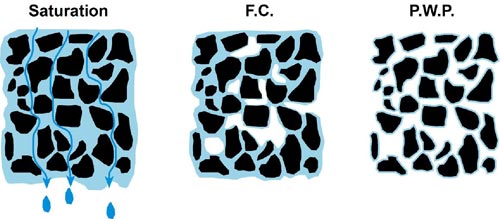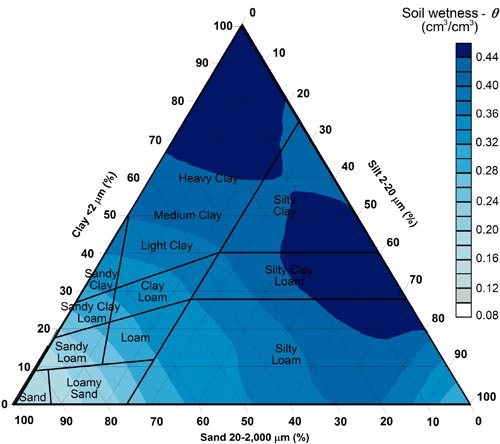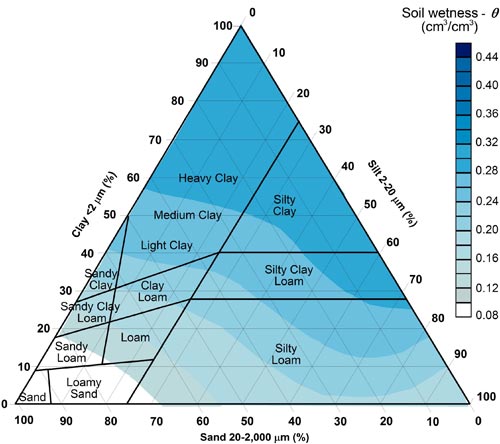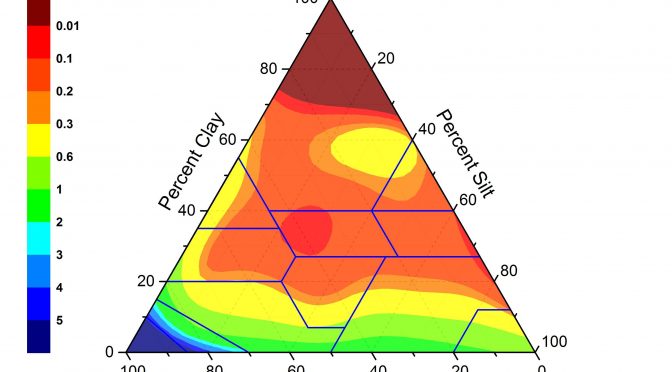Infiltration
This unit covers how water enters the lithospheric path of the water cycle by infiltration, i.e. how precipitation enters the soil. This step is one of the links between meteorology (precipitation output) and hydrology (precipitation input via the infiltration process).

Goals
The goals of this unit are 1) to describe the infiltration process and 2) quantify the infiltration rate as a function of precipitation rate and amount, soil type and soil moisture conditions. Both measuring and modeling approaches for quantification of infiltration are briefly introduced.


After successful completion of this unit students will be able to
- Name the factors on which infiltration depends
- Describe the infiltration process
- Explain how infiltration rate is affected by soil moisture conditions and precipitation rate and duration
- Define field capacity, and permanent wilting point for various soil types
- Discuss the Green-Ampt model and Philip model (graduate students)
- Apply the Horton and Richard equations to quantify infiltration (graduate students)
- Describe and compare various methods for measuring infiltration
Students’ tasks
- Read Dingman‘s Chapter 8.1 to 8.1.5 (included), 8.2 to 8.2.3.4 (included), 8.3 to 8.3.3 (included), 8.4.3 to 8.4.3.3 (included)
- Watch this video on the application of Horton’s equation
- Watch this video How to calculate the infiltration capacity
- Watch this video that explains how Richard’s equation, the Green Ampt method and Horton’s approach are related and describe the infiltration process
- Watch this video on infiltration and ponding
- Fill out the questionnaire prior to Thursday 2359 Alaska Time
- Solve the problems assigned at your class level in this Unit 12 Applications sheet and submit the scanned results by Thursday 2359 Alaska Time
© Nicole Mölders | All rights reserved
